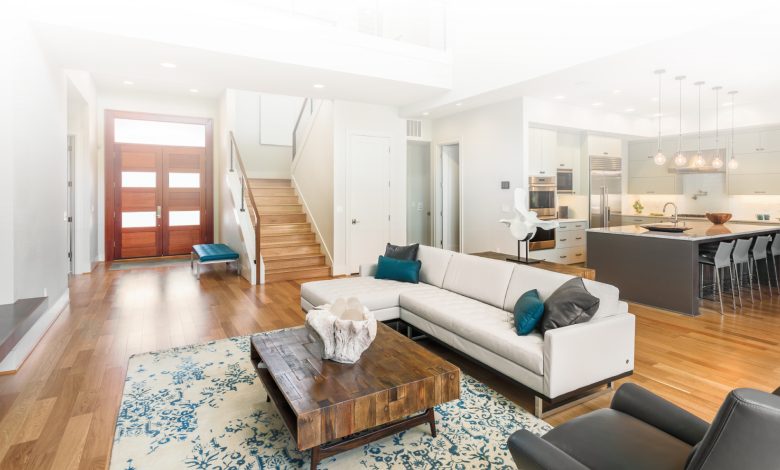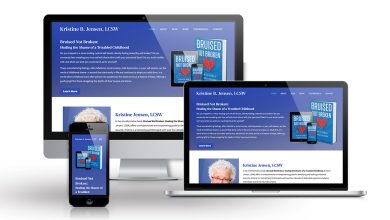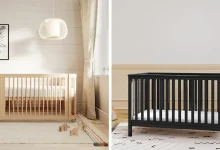Home Living Exhibition: Redefining Your Space With Creativity and Comfort

Introduction
A home living exhibition offers an immersive journey into design, innovation, and lifestyle solutions that transform houses into personalized sanctuaries. It unites homeowners, interior designers, architects, builders, and product innovators in one vibrant space to explore new ideas, hands-on products, and future-ready trends. Far from a static display, this kind of exhibition delivers a living dialogue between aesthetics, functionality, and sustainability. It encourages synergy between personal taste and real-world practicality, inspiring individuals and professionals to reimagine the meaning of home.
The Evolution of Home Living Exhibitions
What began as simple trade fairs showcasing furniture and fixtures has matured into multi-layered experiences that engage all the senses. Modern exhibitions weave together curated show homes, interactive workshops, smart home zones, and educational showcases. Instead of selling products on-site, exhibitors offer experiential environments that invite visitors to imagine themselves living in each space. Exhibitions are lengthened beyond weekend events to longer immersive weeks with masterclasses, eco-architecture talks, design competitions, renovation clinics, and virtual reality walkthroughs. This evolution signals that homes are no longer just shelter—they are platforms for personal expression, health, community, and purpose.
Feature Zones and Thematic Hubs
Home living exhibitions are often organized around thematic inspiration zones. Urban living studios present compact efficiency through modular furniture, minimalist lighting, small‑space kitchens, and retractable storage. These vignettes show how tight floor plans can still feel open, functional, and inviting. Nature‑connected retreats showcase biophilic elements such as indoor plant walls, natural stone, green cabinetry, passive cooling techniques, and side and skylight daylighting that connect interiors to outdoors. Multigenerational homes demonstrate inclusive layouts with accessible bathrooms, universal fixtures, quiet zones, and private‑shared circulation paths ideal for aging in place. Tech‑enabled smart zones allow attendees to interact with voice‑controlled lighting, HVAC systems, motorized shades, security sensors, robot vacuums, and digital home‑notifying panels that show real‑time energy usage. Visitors gain insight into living in sync with technology rather than being controlled by it.
Interactive Workshops and Learning Forums
Beyond visual exploration, exhibitions offer hands‑on sessions designed to impart practical knowledge. DIY build workshops empower attendees to construct minimalist shelves, vertical herb-planter walls, resin tabletops, or simple loft-bed frames—demonstrating that customization does not always require hiring a contractor. Material masterclasses invite participants to feel differences between reclaimed wood, eco-ceramics, moisture‑resistant laminates, coastal‑finish metals, cork tiles, and acoustic panels. Home automation demos allow visitors to pair motion sensors, voice assistants, timed plugs, and garden‑moisture apps on real devices that react in simulated living rooms or kitchens. Wellness-themed seminars focus on circadian lighting, air-purifying HVAC systems, humidity control, water-saving fixtures, ergonomic seating, and fitness-quiet amenities that integrate health goals into everyday routines.
Curated Design Installations
Professional designers and brands often collaborate on bespoke installations that tell a layered story rather than simply displaying product. These mini-setups blend interiors, art, tabletop design, lighting, landscaping, and sensory cues. For instance, a coastal-themed vignette might feature bleached timber, seagrass rugs, driftwood tables, bougainvillea-scented diffusers, woven pendant lamps, and motorized louvered pergolas that simulate sunrise to sunset shading. Another installation may recreate a Tokyo micro‑apartment using recessed lighting, five‑panel pocket walls, concealed slabs, tatami platforms, and multifunctional futon‑like seating to highlight space-making creativity.
Sustainability and Green Living Highlight
With global focus on climate-friendly design, many exhibitions dedicate major space to sustainability. Green building concept displays include rainwater harvesting kits, greywater treatment tanks, passive cooling panels, photovoltaic roof shingles, recycled‑plastic insulation, and rooftop farms. Landscaped feature zones showcase xeriscaping, native gardens, bee‑friendly habitats, and community-shared food forests, demonstrating how outdoor areas can convert into ecological assets. Educational talks by architects and green certification bodies focus on Local Energy Assessment, Life Cycle Analysis, and carbon-neutral renovation practices to illustrate that environmental responsibility can go hand in hand with style and affordability.
Design Consultations and Planning Clinics
On-the-spot scheme reviews allow visitors to bring floor plans or photographs and have professional designers propose color palettes, furniture layouts, lighting schemes, eco-upgrades, or renovation roadmaps. These mini-consultation sessions help homeowners avoid costly layout mistakes and begin planning projects with clarity. Some exhibitors also offer exhibition‑only promotional packages such as bundled consultation, product sourcing, installation, and smart-home setup services—encouraging attendees to act on their visions promptly.
Retail Components and Product Discovery
Though experiential design takes center stage, exhibitions also offer access to new products and deals. Participants can browse booth collections of cabinetry manufacturers, sustainable lighting studios, curbside pergolas, modular closets, artisan kitchens, bathroom accessories, and designer fixtures. Many companies run exclusive show promotions that bundle installation, shipping, warranties, and free samples. Product sourcing is simplified through show-exclusive ordering and returns assistance.
Networking, Community, and Expert Engagement
These exhibitions serve as hubs where homeowners, trade professionals, and enthusiasts mingle. A feature Networking Lounge enables casual introductions, while lounges for professionals host brisk conversations between architects, builders, stylists, and lighting engineers. Local design awards and renovation competitions take place in front of audiences, celebrating innovative projects and encouraging community identification with forward-thinking design. Networking events, open-stages, evening conversations with architects, or wine and canapé nights deepen connections and spark collaborations.
Real-Life Transformation Features
A powerful segment of the exhibition includes live transformation installations. A dilapidated 20-year-old kitchen is renovated live over a week, complete with tile replace, cabinetry upgrade, lighting integration, and finishing touches—allowing visitors to observe decision-making, technical challenges, and sees how spaces evolve. Similarly, a dark hallway is brightened by structural improvements such as a skylight, a mirror‑reflective shaded window well, printable wallpaper, and recessed LED light stripes. At the end, before‑after tours and commentary help guests reimagine similar changes at home.
Visitor Experience and Engagement
Modern home living exhibitions are designed with user-centric flow in mind. Arrive via welcoming reception spaces with coffee baristas, sustainable snack kiosks, rest zones with couches or hammocks and children’s play modules. Navigation signage indicates learning journeys such as “Smart Home Starter,” “Eco‑Upgrade Path,” “Style Inspiration Pods,” and “DIY Studio.” AR-coded elements let attendees scan spaces and instantly view product specs or “shop the look” catalogs on mobile screens. Photo‑ready snap zones draw visitors into immersive environments framed with plants and wood, encouraging social sharing and extended emotional engagement.
Planning Your Visit
To make the most of the event, start by registering online to receive floor‑plan maps and personalized schedules for panels or hands‑on sessions. Decide whether you’re focused on whole‑home renovation, single‑room improvement, smart upgrades, or outdoor design. Prioritize talks, workshops, and zones aligned with your goals and reserve entry times early, especially for limited‑seating demonstrations. Prepare digital or printed copies of floor plans or room dimensions to support on-site design clinics.
Post‑Exhibition Roadmap
Real change begins after the lights dim. Collate the data gathered: vendor contacts, samples, photos, design ideas, and quotes. Create visual boards—online or physical—to align materials, colors, spatial layouts, and tech inclusions. Reach out to exhibitors for sample installation, cost validation, or trial periods. If a full renovation is in view, assemble your short‑list of designers and contractors who engaged meaningfully during the show and request follow‑up site visits. Launch prototypes such as smart bulbs, automated shades, or small garden beds to test concepts before full implementation.
Future of Home Living Exhibitions
Expect immersive integration of extended reality experiences where attendees place full‑scale virtual walls in existing rooms via AR glasses or projection mapping. Data scopus may allow real-time calculation of energy‑savings uplift from proposed upgrades. Sensor nodes embedded in demo homes will track humidity, thermal comfort, environmental impact and occupancy patterns while guest thermostats replicate improvement outcomes. Exhibitions may evolve into mini-green neighborhoods featuring back-to-back show homes designed to support networking homeowners and acting as living laboratories for community-level design.
Conclusion
A Home Living Exhibition is much more than a showcase; it is a catalyst for change and creativity. It transforms the aspiration of home transformation into an accessible, immersive, and actionable experience. By blending visionary installations, educational content, hands-on activities, sustainable design commentary, and direct trade engagement, the exhibition empowers visitors to confidently define their next chapter in living environments. Well beyond mere product promotion, it fosters community, clarity, and creativity—shaping the way people live, work, connect, and grow in a world where home is both refuge and expression.









